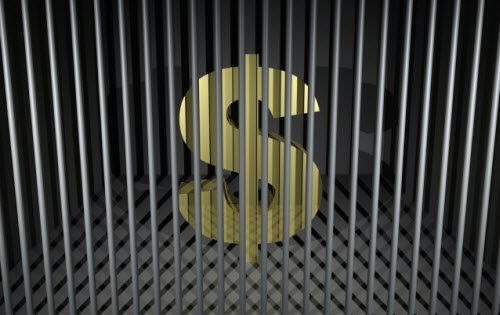
The Long Binding Chains

We have to gain a historical perspective that ties all of this together.
Today UNICOR which uses prison labor is a $900,000,000 industry.
At least 37 states allow commercial application of prison labor. Making everything from McDonald’s uniforms to Military uniforms. Even working call centers for major global telecommunications companies.
Right now there are 4,000 inmates fighting California wildfires (including juveniles) for $2 an hour or less.
You’ve already heard horror stories of overcrowding, death, abuse, rape and extortion within prison walls across America. This is what they call “insourcing” and is Americas answer to outsourcing.
Putting that “Made In America” tag back on commercial goods.
You can’t get a job on the outside at living wages but as one of the forgotten millions behind bars you’ll fight to get a job inside for 11 cents an hour. How else will you get socks and toothpaste? Or pay your court mandated prison rent or the fines and costs for missing a rent payment?
Inside a plethora of industries with little to no oversight hold a monopoly on goods and services in no bid contracts given out like party favors. So prisoners get served maggots in their food and the FDA says “sorry, they aren’t under our jurisdiction.” They live in filth and violence and the government says “sorry, that is a private facility and not subject to public scrutiny.” America leads the world in men being raped due to prisons and the feds say “sorry. We don’t have enough money or manpower to prevent that”
As James Baldwin quoted,
“The role of the artist is exactly the same as the role of the lover.
If I love you, I have to make you conscious of the things you don’t see.”
Here are the chains. See them?
Slavery from US conception up till 1865.
1841 to 1928 Convict Leasing.
1890 to 1950 Chain Gangs. 1934 to 2015 UNICOR uses penal labor from the Federal Bureau of Prisons to produce goods and services
1970 prisons begin mass warehousing of bodies. 1980 prisons are privatized. From 1970 to 2012 prison populations explode going from 196,000 nationwide to 2.4 million. 2013 prison insourcing made legal in as many as 37 states.
Now break the chain.
“The only difference between slavery and convict leasing Is that with convicts so plentiful, they were seen as disposable.”
Matthew J. Mancini – One Dies, Get Another: Convict Leasing in the American South, 1866-1928
APRIL 8th, 1911
Mine Explosion near Birmingham, Alabama, Kills 128 State Prisoners

Equal Justice Initiative.
Commentary by Max Parthas
By 1910, the Alabama had become the sixth largest coal producer in the United States. Between 1875 and 1900, Alabama’s coal production grew from 67,000 tons to 8.4 million tons. This growth was driven in large part by the expansion of convict leasing in the state; in Birmingham, the center of the state’s coal production, more than 25 percent of miners were leased convicts. In addition, more than 50 percent of all miners in the state had learned to mine while working as convicts.
State officials quickly learned how to use the convict leasing system to disproportionately exploit black people.
In an average year, 97 percent of Alabama’s county convicts were black. When coal companies’ labor needs increased, local police swept small-town streets for vagrants, gamblers, drunks, and thieves, targeting hundreds of black Alabamians for arrest. These citizens were then tried and convicted, sentenced to sixty or ninety-days hard labor plus court costs, and handed over to the mines.
Employers frequently held and worked convicts well beyond their scheduled release dates since local officials had no incentive to intervene and prisoners lacked the resources and power to demand enforcement.
Conditions in the mines were deplorable. Convicts were often chained together in ankle-deep water, working 12- to 16-hour shifts with no breaks, and surviving on fistfuls of spoiled meat and cornbread stuffed into the rags they wore for uniforms. Describing the experience, a black former convict laborer recalled that the prisoners had slept in their chains, covered with “filth and vermin,” and the powder cans used as slop jars frequently overflowed and ran over into their beds.
Prisoner safety was not a priority for the mines’ owners and operators. In 1911, the Banner Mine near Birmingham exploded, killing 128 convicts leased to the Pratt Consolidated Coal Company. A local newspaper listed the crimes of the victims next to their names: vagrancy, weapons violations, bootlegging, and gambling. A rural newspaper observed, “Several negroes from this section . . . were caught in the Banner mine explosion. That is a pretty tight penalty to pay for selling booze.”
Join Millions for Prisoners March on Washington
More information at www.iamWEubuntu.com
New Abolitionists Radio
Move To Abolish 21st Century Slavery
NORTH STAR
Image and story found here
Equal Justice Initiative.
Commentary by Max Parthas